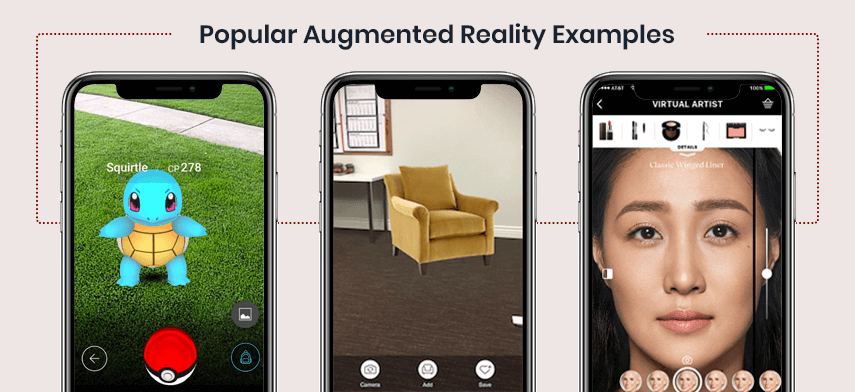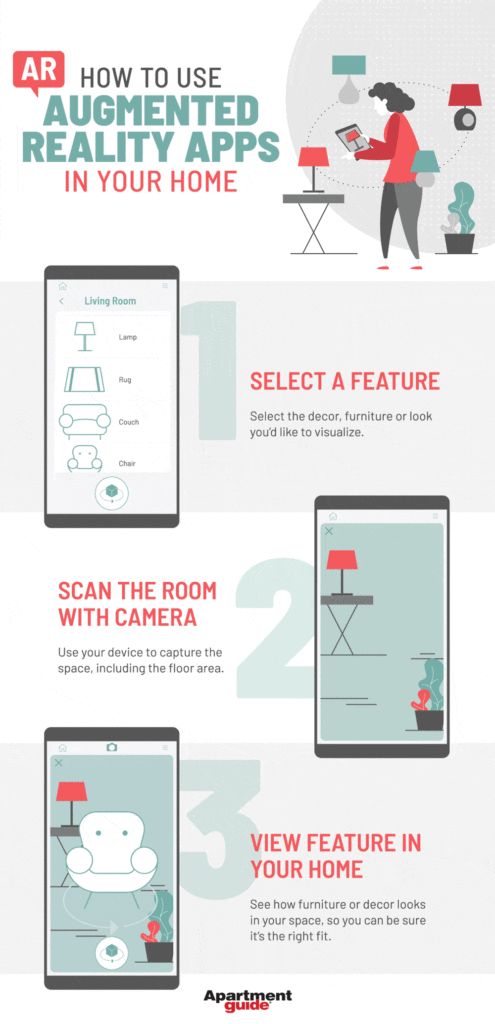In today’s fast-paced world, technology is advancing at an unprecedented rate, and augmented reality is one of the most innovative and exciting technological advancements that have taken the world by storm. Augmented reality has revolutionized the way we interact with the world around us, and it has become an essential tool for many industries, including gaming, education, and marketing.
Augmented reality, or AR, is a technology that allows computer-generated images, sounds, and other sensory information to be superimposed onto the real world. In other words, AR adds a layer of digital information on top of the physical world, creating a unique and interactive experience. One of the most famous examples of augmented reality is the popular mobile game, Pokemon Go. This game uses your smartphone’s camera and GPS to create an interactive experience that allows you to catch virtual Pokemon creatures in the real world. With augmented reality, the game creates the illusion that the Pokemon creatures are right in front of you, making the experience more immersive and engaging.
An example of augmented reality is Google Lens. It is a visual search technology that uses a user’s smartphone camera to identify objects and provide information about them. It can recognize text, landmarks, and objects, as well as providing translations and shopping options. It is available on both Android and iOS.

What is Augmented Reality?
Augmented Reality (AR) is a technology that merges the physical and virtual worlds by superimposing digital content onto real-world objects. It uses computer vision, machine learning, and image recognition to allow the user to interact with the digital content in a more natural, immersive way. AR is becoming increasingly popular for both business and entertainment purposes, and is used in a variety of applications such as gaming, advertising, education, and healthcare.
Examples of Augmented Reality
AR technology has been used to create a wide range of experiences and applications, from simple games to complex enterprise solutions. Some of the most common examples of AR include:
1. Mobile Apps
Mobile apps are one of the most popular applications of AR technology. Popular apps such as Snapchat, Pokemon Go, and IKEA Place allow users to interact with the digital content in a more natural, immersive way. These apps use the device’s camera to recognize objects and provide the user with relevant information or a unique experience.
2. Retail Experiences
Retailers are leveraging AR technology to create unique shopping experiences. For example, some stores are using AR to allow customers to try on clothes and accessories virtually, without having to physically try them on. Additionally, some stores are using AR to provide customers with interactive product information, such as visualizing products in different colors or sizes.
3. Video Games
AR technology has also been used to create immersive video game experiences. Popular games such as Pokemon Go, Harry Potter: Wizards Unite, and Jurassic World Alive use AR to allow players to interact with the game in a more natural way. In these games, players can explore their real-world environment and encounter digital creatures that appear in their physical surroundings.
4. Education
AR is also being used to create engaging educational experiences. By using AR, educators can create interactive lessons that help students learn in a more immersive and engaging way. For example, AR can be used to create virtual tours of historical sites, or to allow students to visualize complex concepts such as anatomy or the solar system.
5. Healthcare
AR technology is also being used in the healthcare industry to improve patient care. AR can be used to provide doctors with interactive visualizations of a patient’s medical history or to guide them through complex medical procedures. Additionally, some medical devices are now being equipped with AR technology to help doctors diagnose and treat their patients more effectively.
6. Advertising
AR technology is being used to create more engaging and interactive advertisements. For example, brands are using AR to allow customers to try on products virtually, or to visualize how a product would look in their home. Additionally, some brands are using AR to create immersive experiences for customers, such as virtual product demonstrations or interactive stories.
7. Manufacturing
AR technology is also being used to improve the efficiency of manufacturing processes. For example, some manufacturers are using AR to provide workers with real-time visual guidance and instructions on how to assemble products. Additionally, AR can be used to track the progress of production and to identify any potential issues with the assembly process.
8. Military
AR technology is also being used by the military to enhance training and operational efficiency. For example, some military units are using AR to provide soldiers with real-time visual guidance during missions, or to help them better understand their environment. Additionally, AR can be used to improve the accuracy and effectiveness of weapons systems.
9. Architecture and Design
AR technology is being used by architects and designers to create more immersive and interactive designs. For example, some architects are using AR to allow clients to visualize their designs in 3D, or to explore their designs in augmented reality. Additionally, some designers are using AR to create interactive product demonstrations or virtual showrooms.
10. Art and Entertainment
AR is also being used to create unique art and entertainment experiences. For example, some artists are using AR to create interactive installations or 3D sculptures. Additionally, AR can be used to create immersive music or theater experiences, or to allow users to explore virtual worlds.
Frequently Asked Questions About Augmented Reality
Augmented reality is a technology that enables a user to view and interact with a digital overlay on top of the physical world. It can be used to create immersive experiences, provide valuable context, and revolutionize the way people interact with their environment.
What Is an Example of Augmented Reality?
One of the most popular examples of augmented reality is Pokémon GO, the mobile game that was released in 2016. In the game, players use their smartphones to find and capture virtual Pokémon in the real world. The game uses GPS technology and the camera of the phone to superimpose the Pokémon onto the real world. Other examples of augmented reality include Google maps, which can provide real-time directions and street view images, and Snapchat filters, which can be used to change the appearance of the user’s face in real-time.
How Does Augmented Reality Work?
Augmented reality works by combining digital elements with the physical world. This is done by using a device, such as a smartphone or tablet, to detect physical objects and then display digital information on top of them. This digital information can be anything from text, to images, to videos. To create a more immersive experience, the digital elements are often animated or interactive.
What Are the Benefits of Augmented Reality?
Augmented reality has a number of potential benefits, including improved safety, increased efficiency, and enhanced user experiences. In terms of safety, augmented reality can be used to provide real-time directions and navigation, which can help reduce the risk of getting lost. In terms of efficiency, augmented reality can be used to provide context-sensitive information, which can help streamline processes and reduce training time. Lastly, augmented reality can be used to create immersive experiences, which can be used to engage and entertain users.
What Are the Challenges of Augmented Reality?
Although augmented reality has a number of potential benefits, it also has some challenges that need to be addressed. One of the biggest challenges is the accuracy of the data being provided, as augmented reality relies on accurate and up-to-date data to provide the best experience. Additionally, the user interface of augmented reality applications can be quite complex, which can make it difficult for users to understand and use the applications.
What Technologies Are Used in Augmented Reality?
Augmented reality relies on a number of different technologies, including computer vision, artificial intelligence, and 3D mapping. Computer vision is used to detect and identify objects in the physical world, while artificial intelligence is used to interpret and understand the data collected. 3D mapping is used to create a virtual overlay on top of the physical world, which can be used to display digital information.
In conclusion, augmented reality is no longer a concept of the future, but a present-day reality. From gaming to education and even in the medical field, the technology has found its way into various industries. Companies such as Apple, Google, and Microsoft have invested heavily in developing the technology and integrating it into their products. Augmented reality is not only entertaining and engaging, but it also has the potential to revolutionize the way we learn, work and interact with the world around us.
As we continue to see advancements in technology, we can expect to see more creative and innovative uses of augmented reality. From virtual try-ons when shopping for clothes to interactive museum exhibits, the possibilities are endless. It is clear that augmented reality has a bright future ahead, and we can only imagine how it will continue to shape our world in the years to come. As we embrace this technology, we must also keep in mind the ethical implications of its usage and ensure that it is used in a responsible and beneficial way.


